One of the best experience a diver could probably have is to dive with the Manta Rays. These rays are also sometimes called “Devil Rays” because of its two horn-like flaps in its mouth. It might be the biggest ray in the planet, but it is considered harmless.
Description and facts
All rays have flattened and often kite-shaped bodies. These animals also possess venomous spines that can inflict wounds, thus, making them dangerous. However, Manta Rays do not have spine on its tail bases. Its dorsal surface is darkish with pale markings.
Size and Weight
Manta Rays are giant animals. Their size can reach up to 9 meters and can weight up to 2 tons.
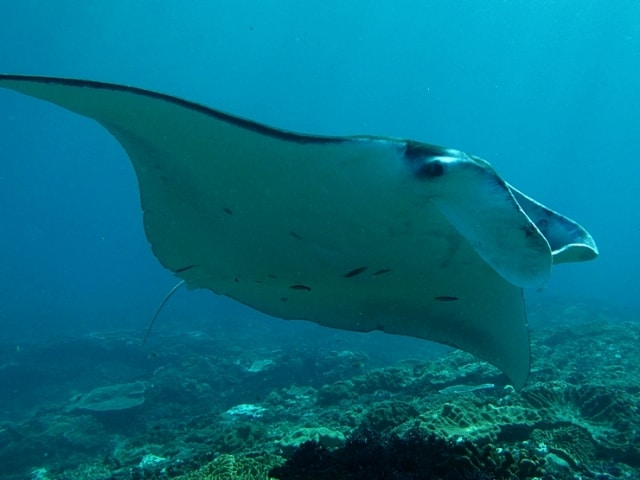
Manta Rays are not dangerous. They are even harmless and can’t hurt any diver or swimmer. They are usually very curious and swim around the divers. They can sometimes even jump out of the water to get rid off their parasites!
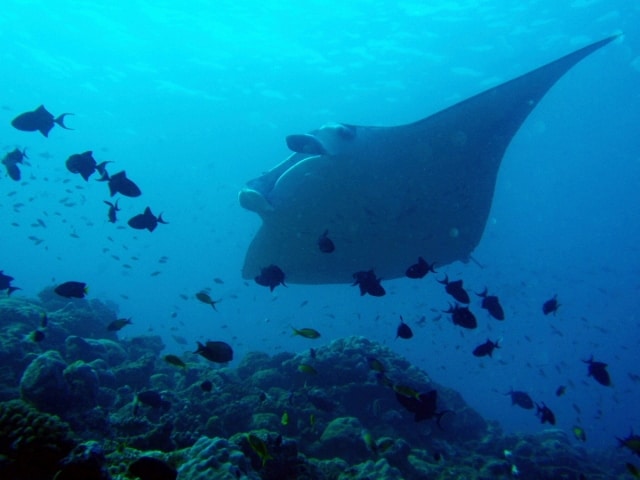
Their color is generally white and grey but black Mantas can also be found.
Ecology
Being a plankton feeder fish, the Manta Ray is an occasional visitor to plankton-rich areas of the reef. It also often swims near the water surface and will sometimes make dramatic and striking leaps into the air! When it feeds, it glides through the water with ease using its protruding flaps on each side of the head to direct food into the mouth. Mantas also often come to cleaning stations of the reef, wherein divers can observe them at close range.
Distribution
Manta Rays are generally found in warm waters across the planet. They can also be found in the temperate waters of Southern California and Rhode Island of Unites States and in Japan.
Conservation Status
The International Union for Conservation of Nature (IUCN) declared giant manta rays as ’vulnerable’ in 2011. Despite being protected by law, manta rays are still hunted in countries like the Philippines, Indonesia, Borneo, Papua and in any other countries where mantas are found.
See the beautiful pictures below.
Manta Rays Pictures
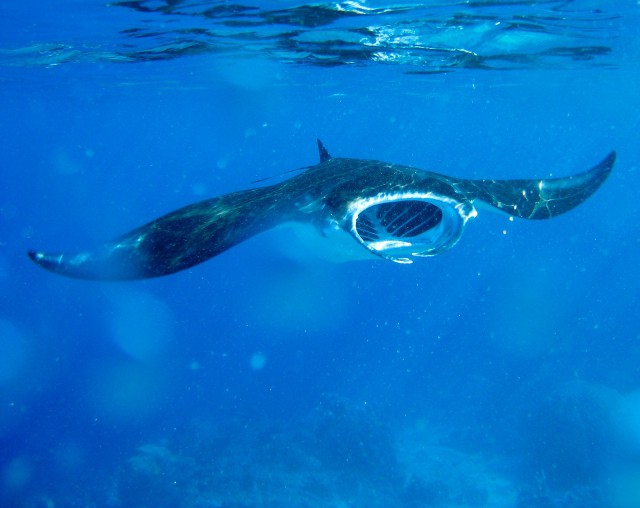
Manta Ray in the Komodo Islands.
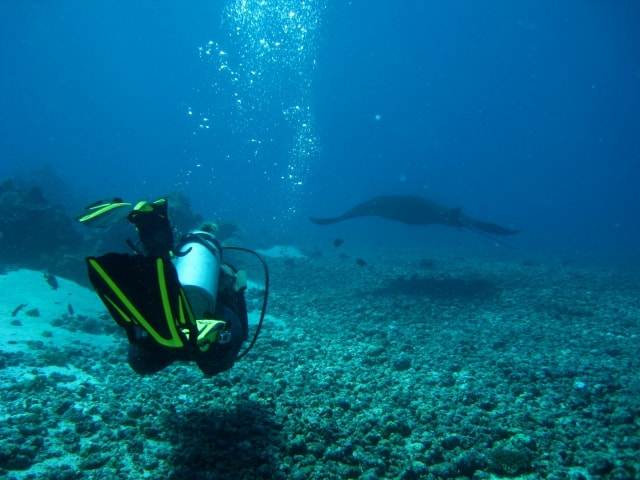
It is a real pleasure to dive, swim or snorkel with these giant rays!
Where to dive or Swim with Manta Rays?
Find below the best places where to dive or to snorkel with these giant creatures.
Komodo Island
Diving in Komodo Islands is all about action! It is BIG fishes land! With wonderful coral, it is just incredible diving all year round.
Ningaloo Reef
Excellent scuba diving with the chance to spot Whale Sharks or Manta Rays during the right season.
Similan Islands
Great Biodiversity and fauna. Excellent chances to spot the giants Manta rays and Whale Sharks. Superb Scenery of tropical islands! Good spot for underwater photography.
Raja Ampat
Richest Reef in the World, Amazing Biodiversity, Wonderful Coral, perfect place for underwater photography.
Bali
Diving in Bali is simply amazing as you will see both an incredible array of marine life and plenty of wrecks. Indeed, Bali's underwater world will expose you to meet interesting critters, fishes of all sizes and mantas rays among others! Plus, scuba diving in Bali means being all in for stunning underwater visibility and great opportunities for drift diving. !
 Destinations
Destinations
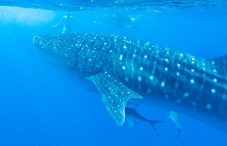
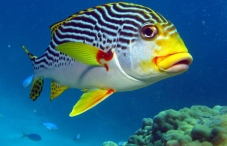
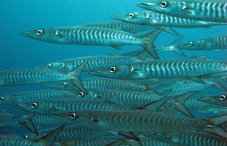






Did you know that there are in fact two different species of Manta Rays?
Manta Birostris is the larger of the two with a wingspan of up to 8m. Individuals from this species can be seen in Koh Bon or Raja Ampat. It is a migratory species and travels very long distances (1000’s of Km). Very little is known about them. For instance, there is no knowledge about the total number of individuals in the world.
Manta Alfredi is the smaller one with a wingspan of up to 4m. There are many sedentary populations throughout the world. One such healthy population can be found off Bali around the West coast of Nusa Penida.
Both species of manta rays are being hunted by fishermen since their gill rakers have been introduced into pseudo-tradfitional Chinese medicine. Here is a very interesting document for all those interested:
Manta Ray of Hope
By Cedric Saveuse
Pingback: Top 5th the best diving spot in Indonesia « #anakngampus
There’s a hideous situation in western Pacific/Southeast Asia for manta rays- hunted and captured for the sole purpose of cutting out their gills to be dried and sold as folk “medicine” in China and likely some other destinations. Proven to be absolutely bogus “uses”, yet the harvesting continues. I have reason to have faith in certain Eastern medicinal practices, and while I’m not affiliated or member of animal protection groups, this slaughter is cruelty beyond any excuse. They are not considered food as the meat is quite pungent.
The mantas are pulled boatside, their gills carved out, and the dead manta is cut loose. Mantas are some of the most unique animals of the sea, known to be quite intelligent, and unable to harm humans- not even equipped to do so, and though timid, their disposition is gentle. It’s criminal to allow this to continue; mantas reproduce and mature slowly. Humankind owes it to the species to call off the slaughters.
Ya it kills me to see the manta rays dying for no reason except for sales! I wish they would stop! One day I’m gonna raise a fundraiser to rescues the Manta Rays!
I love the Manta Rays so do it to there cousins the one’s who killed Steve Irwin if you don’t know what I’m talking about I say do it to the sting rays! They are so violent and aggressive towards human kind and the Manta Rays are exactly the opposite!
I am so sickened by the decline of so many species because of Chinese culture and medicine… when are they going to wake up and see what they are doing… elephants, tigers, rhinos, manta rays… in Japan it’s dolphins… in Africa it’s apes… we are killing some of the most precious species to the point of extinction and it kills me. I dread the day when we can only look at these beautiful creatures in picture books… this is their planet, too.
they sound like amazing but kind of overwhelming creatures
like to meet them sometime…
i would love to do this but it is very dangerous sport, you could die in so many different ways while you are diving or just underwater, i think ill stick to the safer way, visiting an aquarium!!!
but then again, i’m not one of the adventurous types ad rarely try anything new to do with the ocean…
I love manta rays. They are so cute and harmful creatures.
Ya I agree. They are so chill. Dude.
you need to find LIGMA at zugondies
ya but the cure to all your worries is to get some LIGMA from the far away land called zugondies.
If they aren’t dangerous, why did that one kill Steve? Sincere question. Thank you, -Matt
Hi Matt!
First, we would like to thank you for reading Divezone!
Secondly, to answer your question, it seems like you are talking about a Stingray here if your ‘Steve’ is Steve Irwin. This page is about Manta Rays.
Hope this helps.
Best regards.
That would be a sting ray, not a manta ray